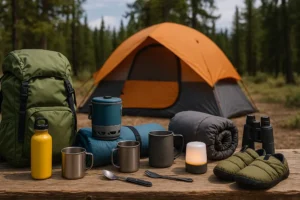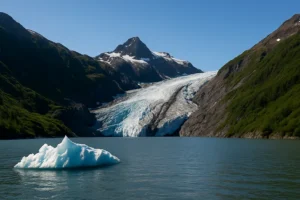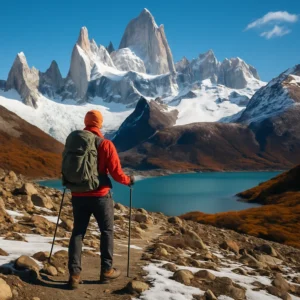Winter hiking is magical. The snow transforms trails into quiet, sparkling wonderlands. The crisp air fills your lungs differently than in summer, sharp and clean. But let’s be real—without the right winter hiking clothes, a beautiful day in the mountains can turn miserable fast. Cold toes, sweaty backs, frozen fingers—anyone who’s layered wrong knows the pain. The secret to enjoying winter hikes is dressing smart, not just dressing warm.
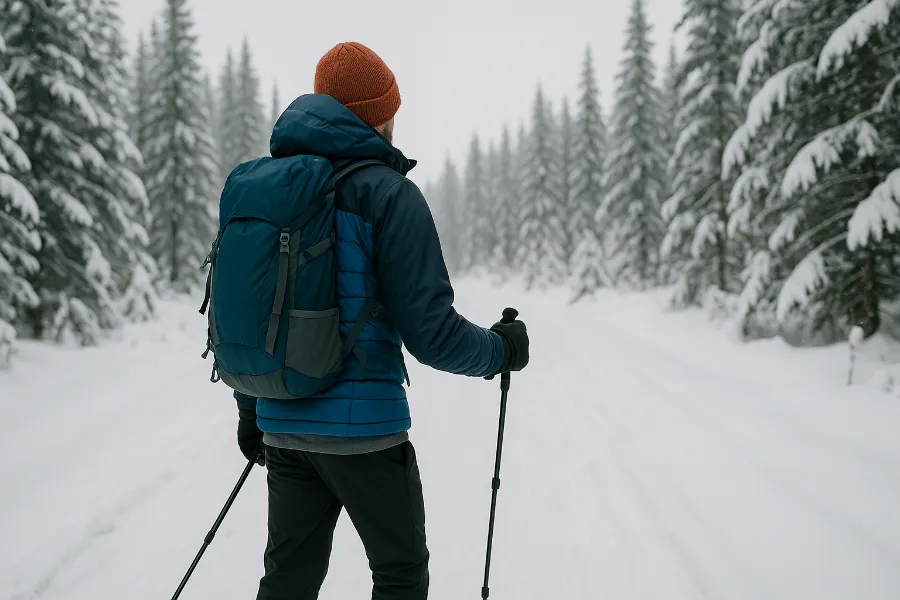
In this guide, I’ll walk you through the essential winter hiking clothes and layering strategies that keep you safe, warm, and comfortable, no matter how low the temperature drops.
The Importance of Layering
The golden rule of winter hiking clothes? Layering. Unlike summer hikes where a single shirt might do, winter demands a system. You’re not just keeping warm—you’re managing heat, sweat, wind, and snow all at once. A proper layering system lets you add or shed clothes as conditions change.
Think of it as three parts working together:
- Base layer – manages moisture
- Mid-layer – traps heat
- Outer layer (shell) – shields from wind and precipitation
Let’s break these down.
Base Layers: Your Foundation
Your base layer sits right against your skin. Its job isn’t to keep you warm—it’s to keep you dry. Sweat is your biggest enemy in winter. Once you’re damp, you’ll lose heat fast.
- What to wear: Merino wool or synthetic materials. Both wick moisture and dry quickly.
- What not to wear: Cotton. Ever. Cotton holds water, stays heavy, and will make you cold.
Popular choices include merino wool tops, lightweight synthetic shirts, or hybrid blends. For bottoms, thermal leggings or long johns work best.
Pro tip: Thickness matters. A lightweight base layer works for moderate cold. In extreme cold, go mid- or heavyweight.
Mid-Layers: The Insulation Engine
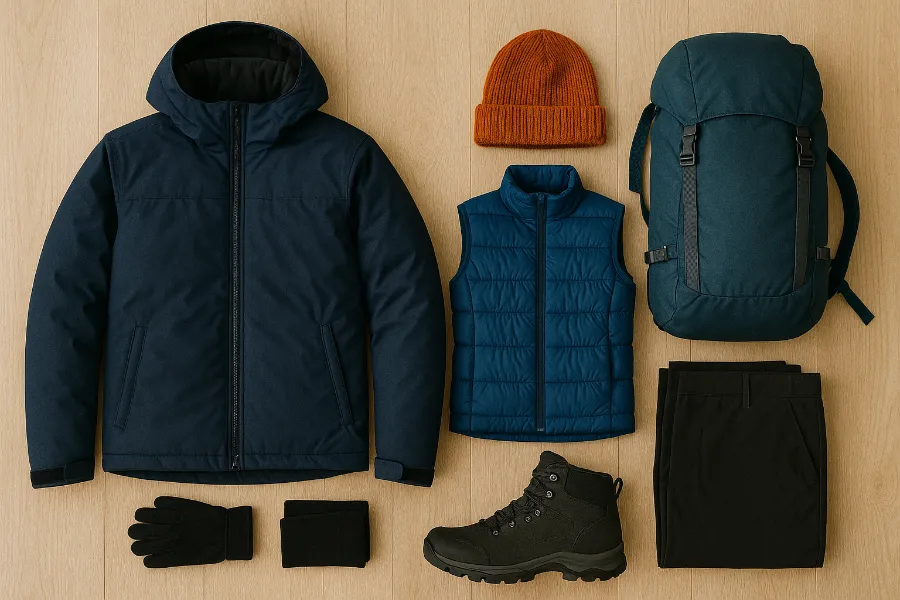
The mid-layer is all about warmth. It traps your body heat in while still letting some air move through so you don’t overheat.
- Fleece jackets or hoodies are lightweight, breathable, and versatile.
- Down or synthetic puffies provide serious warmth but may be too much while hiking uphill.
- Wool sweaters work but tend to be bulkier.
The key here is flexibility. Many hikers bring two mid-layers—a fleece for uphill climbs and a puffy for breaks or descents.
Insulated Jackets: For the Deep Cold
An insulated jacket is a must-have on any winter hike. Whether down or synthetic, it’s your go-to when you stop moving or the wind howls.
- Down jackets: Light, compressible, and incredibly warm. But they lose effectiveness if wet.
- Synthetic jackets: A little heavier but perform better in wet or humid climates.
The trick is to carry one in your pack and throw it on the second you stop. You’ll be thankful within seconds.
Outer Shell: Your Shield
Finally, the outer layer. Your shell blocks wind, snow, and rain while allowing sweat to escape.
- Look for waterproof but breathable fabrics like Gore-Tex.
- Features to love: pit zips for ventilation, adjustable hoods, and roomy fits for layering underneath.
- Skip heavy ski jackets—they’re bulky, overheat quickly, and don’t pack well.
A good shell is your first line of defense against the elements.
Lower Body Layering
Your legs don’t need as much insulation as your torso, but they still require a smart system.
- Base layer bottoms: Merino wool or synthetic long underwear.
- Hiking pants: Fleece-lined or softshell pants for added warmth.
- Waterproof shell pants: Essential in wet snow or heavy storms.
Pro tip: Choose pants with side zippers so you can pull them on without removing boots.
Footwear for Winter Hiking
Cold feet can end a hike fast. Proper footwear is non-negotiable when it comes to winter hiking clothes.
- Insulated boots: Waterproof with solid insulation. Look for at least 200g insulation.
- Wool socks: Warm, moisture-wicking, and durable. Bring an extra pair just in case.
- Gaiters: Keep snow out of your boots, especially in deep powder.
- Traction devices: Microspikes for icy trails, snowshoes for deep snow.
Investing in good boots and socks may cost more, but your toes will thank you at mile three.
Winter Hiking Accessories
Your core might stay warm, but your extremities are another story. Don’t neglect these smaller essentials:
- Hat or beanie: You lose significant heat through your head. Wool or fleece works best.
- Gloves or mittens: Layer system works here too. Thin liners for dexterity, insulated gloves or mittens for warmth.
- Neck gaiter or buff: Keeps wind and snow off your face. A fleece-lined version doubles as a face mask.
- Sunglasses: Snow glare is real and can cause eye strain or snow blindness. Polarized lenses are worth it.
Gear & Safety Add-Ons
Clothing is just one part of staying safe in winter. The right gear helps you handle surprises.
- Backpack: Large enough to store extra layers.
- Emergency gear: First aid kit, headlamp, navigation tools, and a satellite beacon for remote areas.
- Food & water: Pack calorie-dense snacks and insulated water bottles to prevent freezing.
Pro tip: Store water bottles upside down in your pack. Water freezes from the top, so this trick keeps the drinking end liquid longer.
Final Tips for Choosing Winter Hiking Clothes
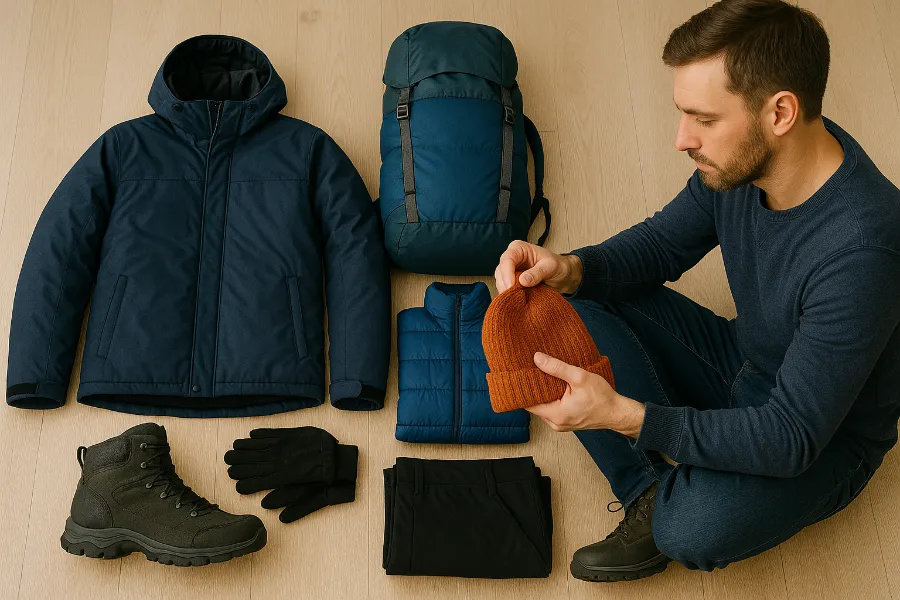
Choosing the right winter hiking clothes isn’t about buying the bulkiest jacket. It’s about balance, adaptability, and comfort.
- Be bold, start cold: Don’t overdress at the trailhead. You’ll warm up quickly.
- Adjust often: Shed layers before you sweat, add layers before you get cold.
- Plan for the worst: Always carry more than you think you’ll need. Weather changes fast in winter.
Wrapping It Up
The right winter hiking clothes can turn a cold, intimidating hike into a joyful adventure. Layer smart, protect your extremities, and pack wisely. Remember, it’s easier to stay warm than to get warm once you’re chilled. With the right system, you’ll spend less time shivering and more time soaking in the quiet beauty of snowy trails.
Bundle up, step outside, and discover how incredible winter hiking can be.



